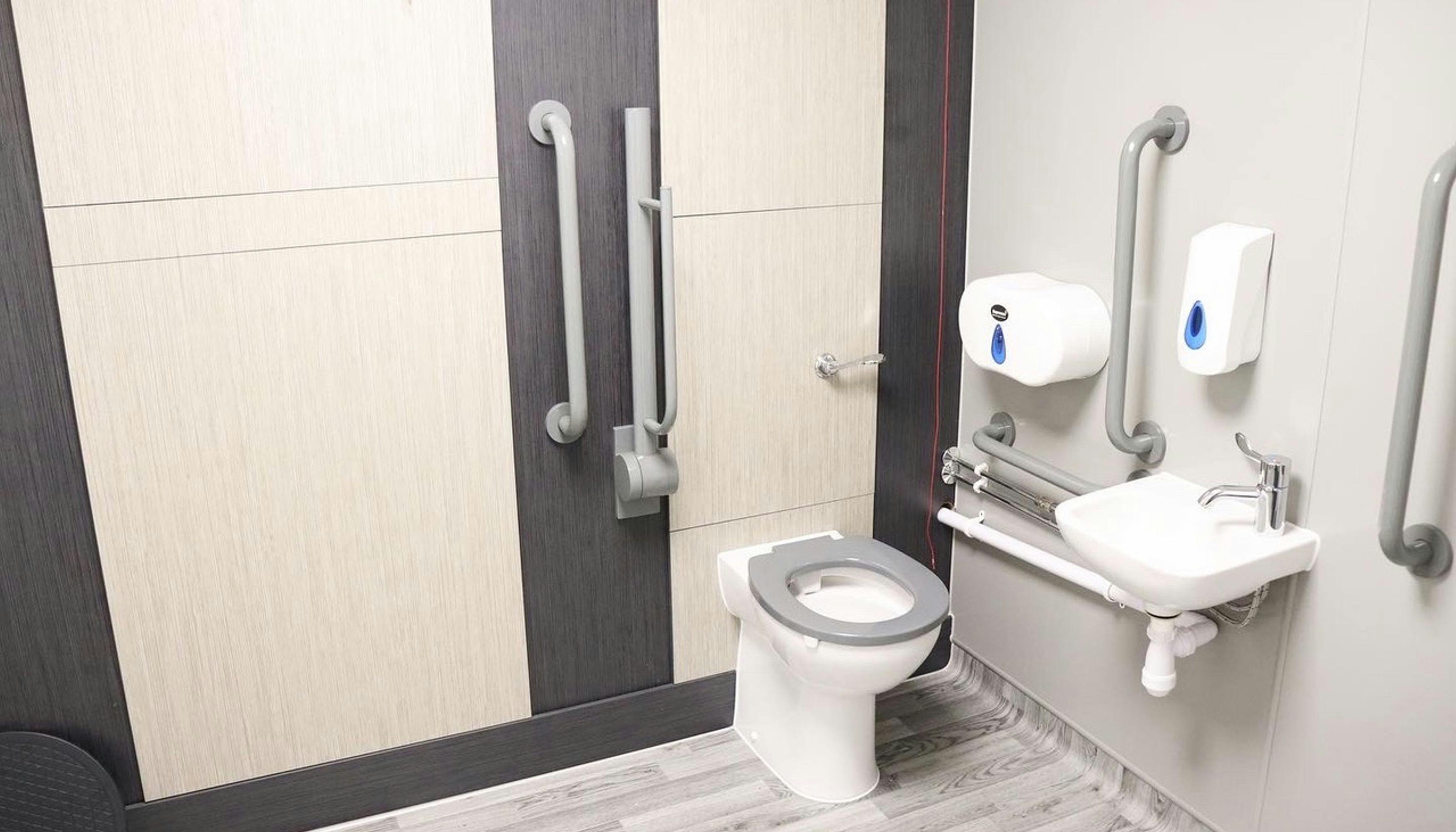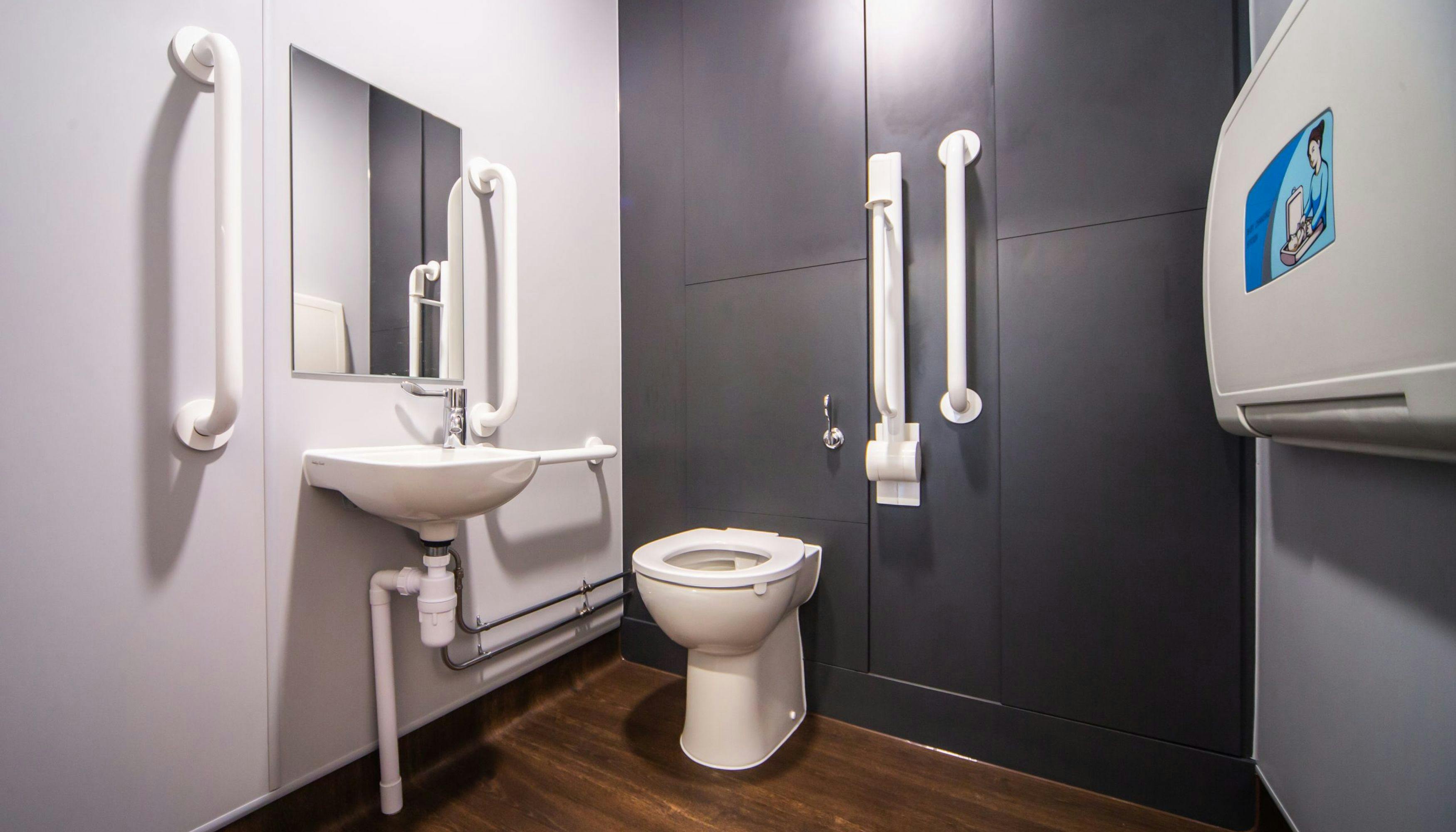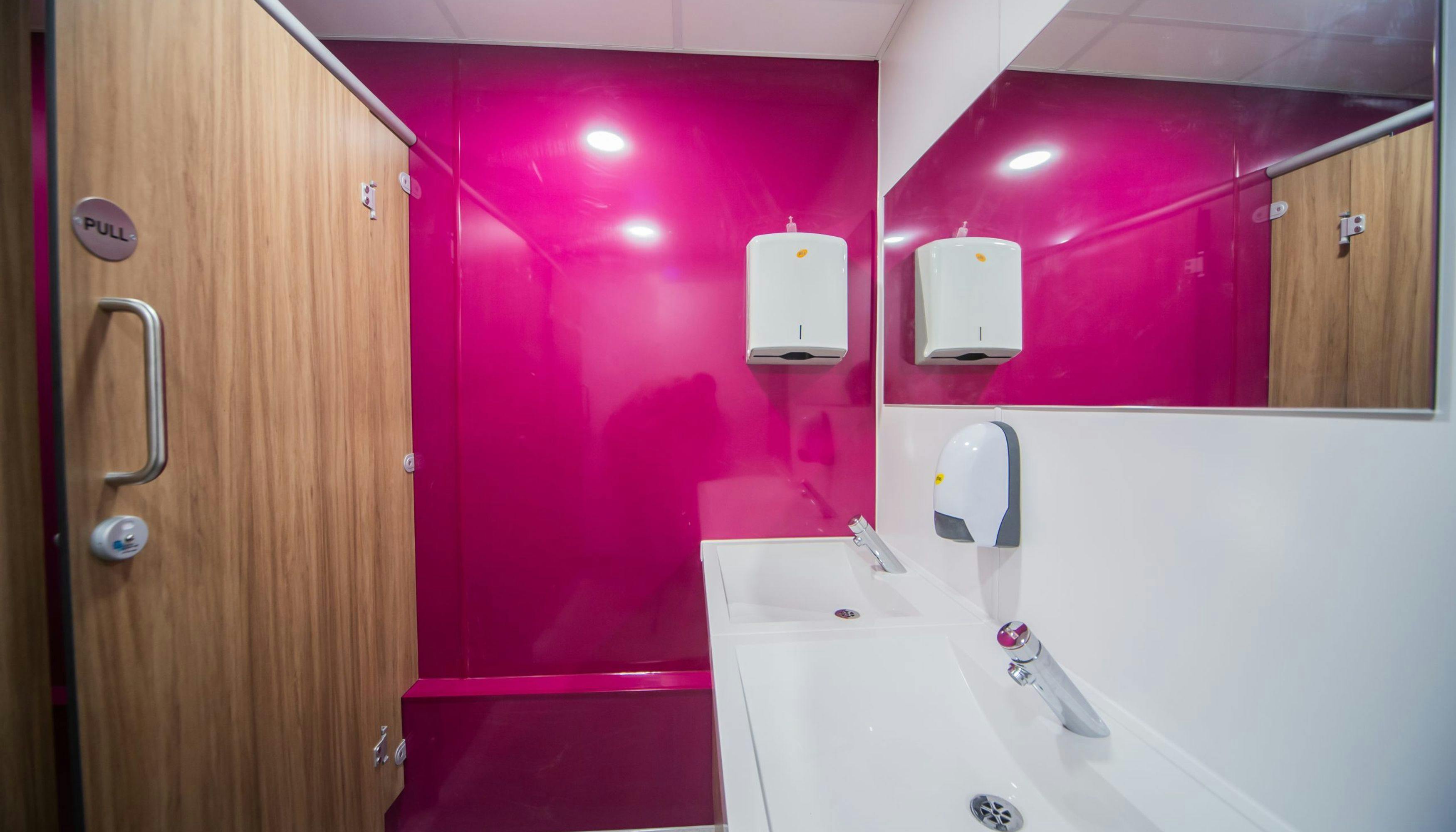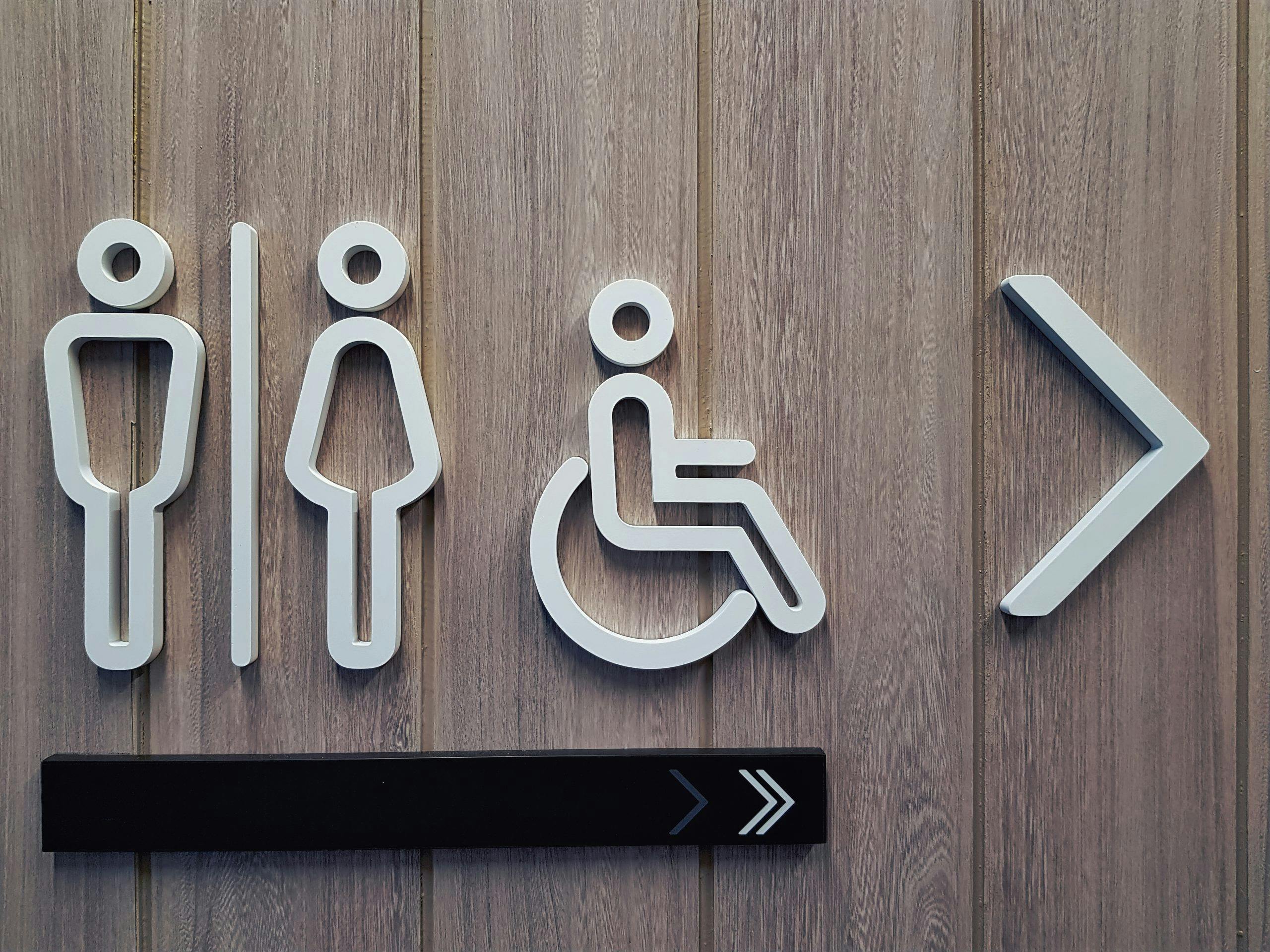Being able to access toilet facilities is something that is essential for everyone. However, there are some members of the public with additional needs, and as a result, standard toilet configurations aren't always suitable to accommodate those who have limited mobility or sight impairments.
For any building owner or planning department, brushing up on disabled toilet regulations is important to ensure that equality, not to mention dignity is maintained across the board.
While it's also possible to consult professional disabled and accessible toilet installers such as ourselves here at Inspired Washrooms for tailored advice, here are some of the top points to keep in mind.
Examples Of Accessibility Needs To Consider
- Amputation
- Arthritis
- Artificial limb usage
- Cerebral Palsy
- Epilepsy
- Multiple sclerosis
- Musculoskeletal injuries
- One-sided paralysis
- Sight impairment
- Spina Bifida
- Spinal cord injury
- Stroke

Disabled Toilet Dimensions
Type 'A' - This allows for lateral transfer from both sides of the toilet.
Minimum dimensions: 2300mm x 2200mm. This includes an allowance for an 1800mm turning circle.
Type 'B' - This allows for one-side transfer from the toilet.
Minimum dimensions: 2200mm x 1700mm.
Ambulant - Designed for those who can walk but with some difficulty. The toilet itself may be a standard design used in non-disabled toilets. However, the space will include grabbing rails along the walls to assist patrons.
There are no minimum dimensions for an ambulant toilet, although building planners should always ensure that enough room is given for those with mild impairment to be able to access the space safely. In addition, it is a requirement to have an ambulant toilet next to every non-accessible toilet, ensuring that there is at least one ambulant toilet present in every toilet block.
Features common in all accessible toilets:
- Signage (including information given in braille)
- Non-slip flooring
- Tactile tiles
- Tactile ground surface indicators
- Minimum door width of 900mm
- Horizontal grab rail on the inside of the door (900mm from the floor)
- Door handle positioned at 1000mm above the floor
- Grab rails on walls
- Accessible washbasin
- Automatic motion-sensor lighting
- Emergency pull cord

What Are The UK Regulations For Disabled Toilets?
Under the Equality Act 2010, any facilities being offered to building users must provide equal access for disabled people, as would be the case for non-disabled people. Public bodies, including the likes of schools, hospitals and councils, must also comply with additional human rights and Equality Act 2010 regulations.
In essence, this means that businesses must seek to make reasonable adjustments to their building, specifically to ensure that disabled patrons are able to access toilet facilities. As part of the process, building owners and facilities managers must look to make improvements and act upon feedback given should facilities not meet the needs of those with disabilities.
Changing Places Programme - New Buildings
The Changing Places Programme is a type of legislation brought about to ensure equality for those with accessibility needs. It requires that all new public buildings constructed since 2020 feature facilities such as hoists, changing benches and adjustments for carers.
Any newer buildings which are not compliant, or older buildings which are in need of adjustments to become compliant, should have accessible toilet refurbishment works undertaken at the earliest convenience. Furthermore, if accessibility compliance is not adhered to in newer buildings by June 2023, then building owners may be prosecuted.
Disabled toilet layout
The layout of a disabled toilet will usually be similar wherever you go. While there are likely to be different styles and finishes, most will have a range of handles to help you stabilise yourself, and the sink is relatively close to the toilet to make it easier for you.
Disabled toilet door size
Something that many people overlook is the size of the door for a disabled toilet. You should make sure that the door is at least 900mm wide. This is going to make it easier for someone in a wheelchair to get through the door without being impeded. Similarly, someone who needs a walking stick or has trouble working will have an easier time too. You don't need to worry about the height as this can be the same as a normal toilet door.
Not only do you need to make sure the width is correct, but you should also ensure that the door opens outwards as opposed to inward towards the toilet.

Disabled Toilet Installation UK - Inspired Washrooms
If you want to ensure that your building meets the needs of those with accessibility needs, then you're in the right place. Inspired Washrooms installs disabled or accessibility-friendly toilets and washrooms right across the UK. Some of the environments we install in include hospitals, schools, restaurants and public buildings.
Interested in starting a project with us? Download our Inspired Washrooms Brochure to view our full range of products and services.
For help and advice with anything we've mentioned above, please get in touch on 0115 811 4242, and our friendly team will get back to you.

